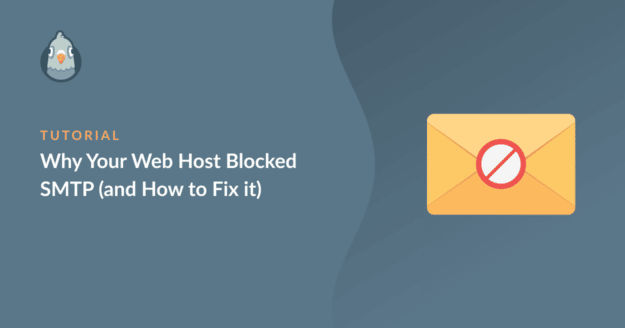Have you just tried to send out a batch of emails only to find SMTP blocked?
Web hosts tend to block SMTP on shared hosting plans to limit spam. Unfortunately, this can also block your legitimate emails entirely, which can be a big problem.
Fortunately, there’s a simple solution for this.
In this post, we’ll explain why your web host may have blocked your SMTP connection and how you can fix it.
Why Is SMTP Blocked By Web Hosts?
Web hosts often block SMTP ports to prevent bad actors from sending spam to other users. This means if you’re using SMTP to send emails (as you should), your WordPress emails will fail to deliver entirely.
In WP Mail SMTP, the Other Mailer mailer won’t work if your web host has blocked SMTP.
Thankfully, you can still use other dedicated mailers to reliably send your WordPress emails using WP Mail SMTP.
Let’s see the steps for connecting WP Mail SMTP with a powerful mailer to bypass the SMTP block once and for all on your WordPress site.
How to Fix SMTP Blocked in WordPress
The best way to fix SMTP issues on your site is to use WP Mail SMTP and configure it with SendLayer.
Here are the steps:
Step 1. Install WP Mail SMTP
WP Mail SMTP is the best SMTP plugin for WordPress. Even if your web host is blocking SMTP, you can still use WP Mail SMTP to send emails successfully.
To get started, we recommend investing in the WP Mail SMTP Pro plan.

After purchasing the license, go ahead and install WP Mail SMTP on your site.
If you don’t have a mailer account created yet, then you’ll have to create one before running the WP Mail SMTP setup wizard.
So, first, we’ll create a SendLayer account and set things up there. Then we’ll get the SendLayer API Key which we’ll add to your website when we run the WP Mail SMTP setup wizard.
Note that you can also complete these steps using Easy WP SMTP, which is one of our top recommended alternatives for WP Mail SMTP.
Step 2. Create a SendLayer Account
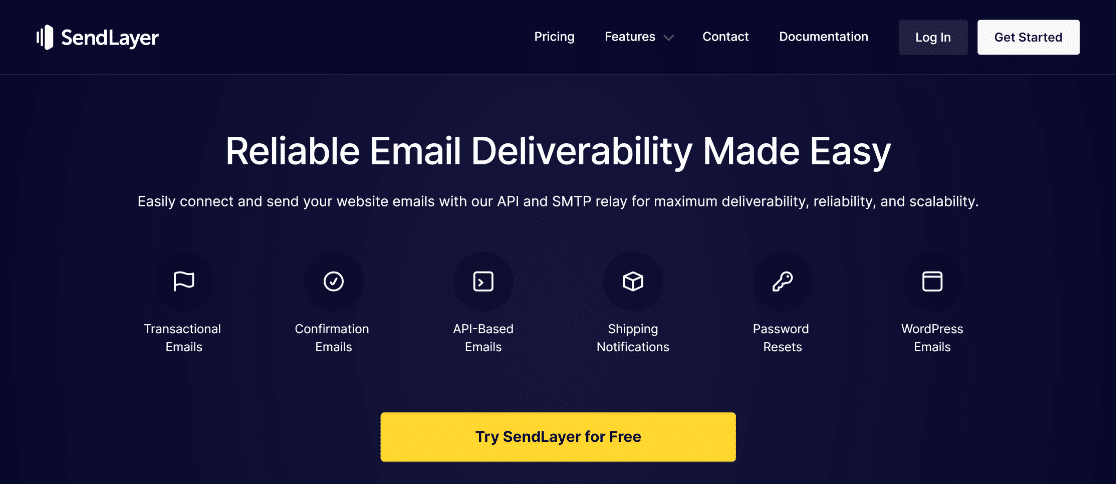
SendLayer is one of the most powerful mailer services. It works reliably even if your SMTP is blocked by your WordPress web host. This is why we’ll use SendLayer with SMTP in this tutorial.
Visit SendLayer and create a new account to get started there. Next, log in to access the admin dashboard.
From the dashboard, click on Add Domain.

On the new screen, enter the domain you’ll be sending emails from. Click Add Domain again to finish this step.
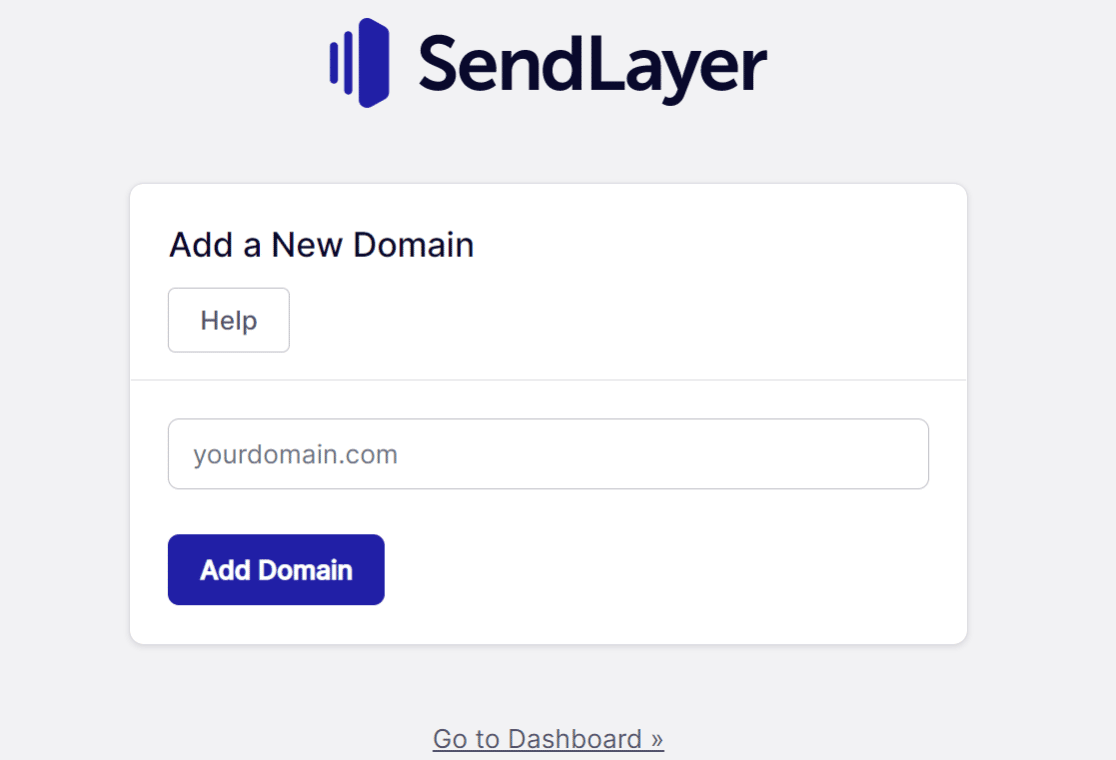
Now, you’ll need to add DNS records for the domain name you want to authenticate.
Add DNS Records
SendLayer will generate a set of DNS records that you need to add to your domain in your hosting account. Copy these and open up your web hosting account in a new tab. Keep the SendLayer tab open because you’ll be back here momentarily.
The DNS record process will differ from one web host to another, so if you’re not sure what to do, it’s best to contact your web host.
Once you’ve added these DNS Records in your hosting account, return to the SendLayer window and checkmark I have added DNS Records, and am ready to proceed. Then press Verify DNS.
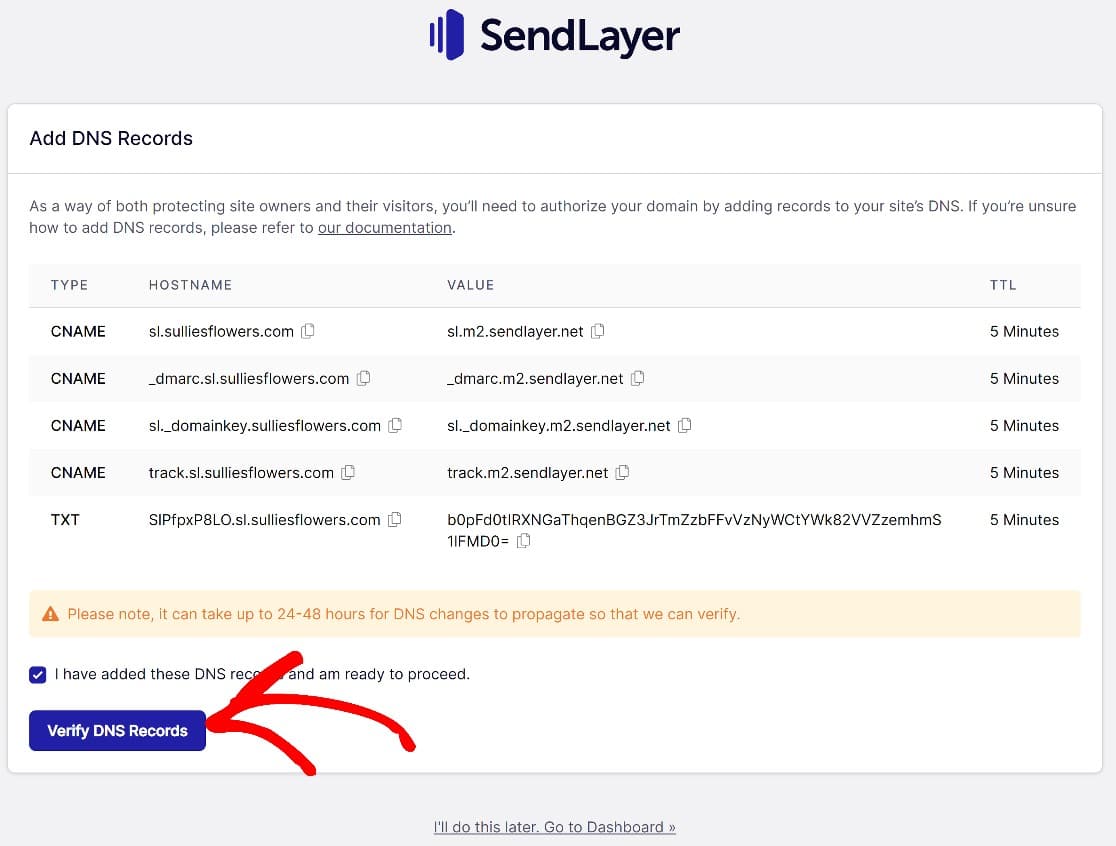
Once this step is done, you’ll be redirected to the DNS Records and Settings page. If you’ve entered the DNS Records properly, you’ll now see a green checkmark next to each DNS Record.
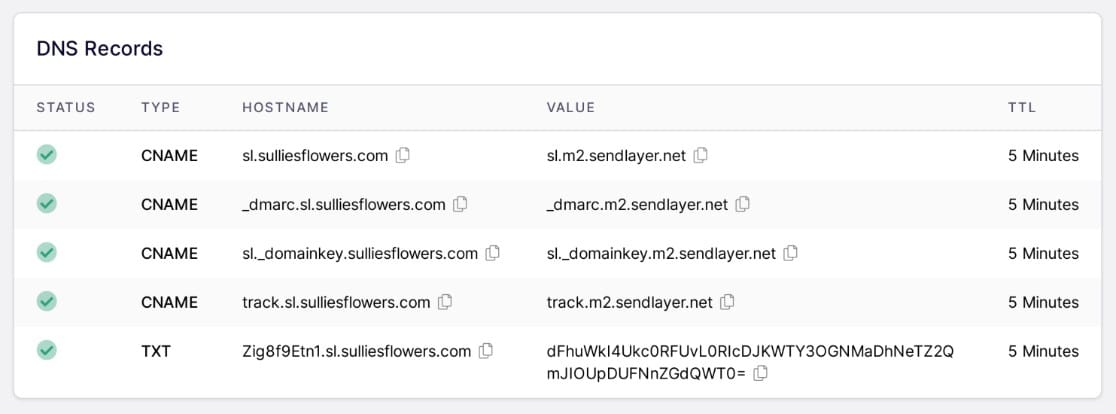
This will mean we’re almost done in SendLayer. But we still haven’t gotten our API Key.
Get Your SendLayer API Key
We’ll need to add a SendLayer API key to your WordPress website. SendLayer will make one for you by default, but you can create additional ones if you need to.
Back in the SendLayer dashboard, click on Settings » API Keys, then copy your API Key by clicking on the icon next to the Show API Key link .
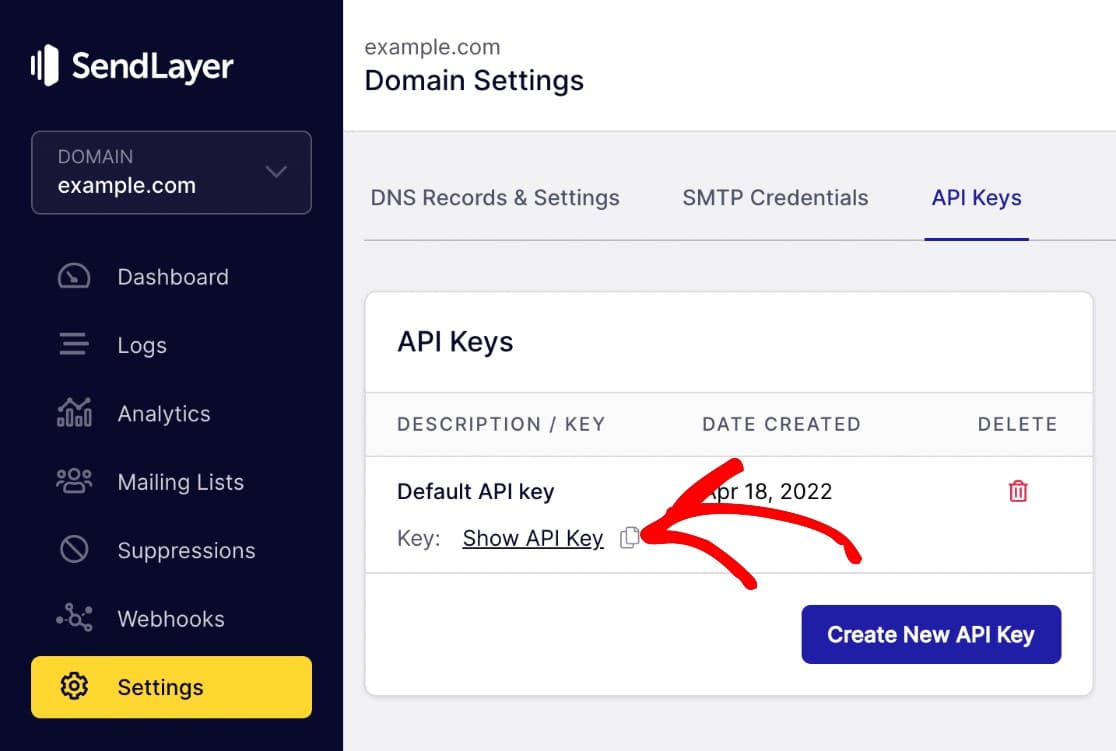
Now, we’ll connect WP Mail SMTP and SendLayer back in WordPress.
Step 3: Connect WP Mail SMTP and SendLayer
In step one we held off on running the setup wizard because we hadn’t created a SendLayer account yet.
Now that we our domain is authenticated with SendLayer, go ahead and initiate the SendLayer Setup Wizard by clicking through WP Mail SMTP » Settings » General. Scroll down to the section labeled Mail, and click Launch Setup Wizard.
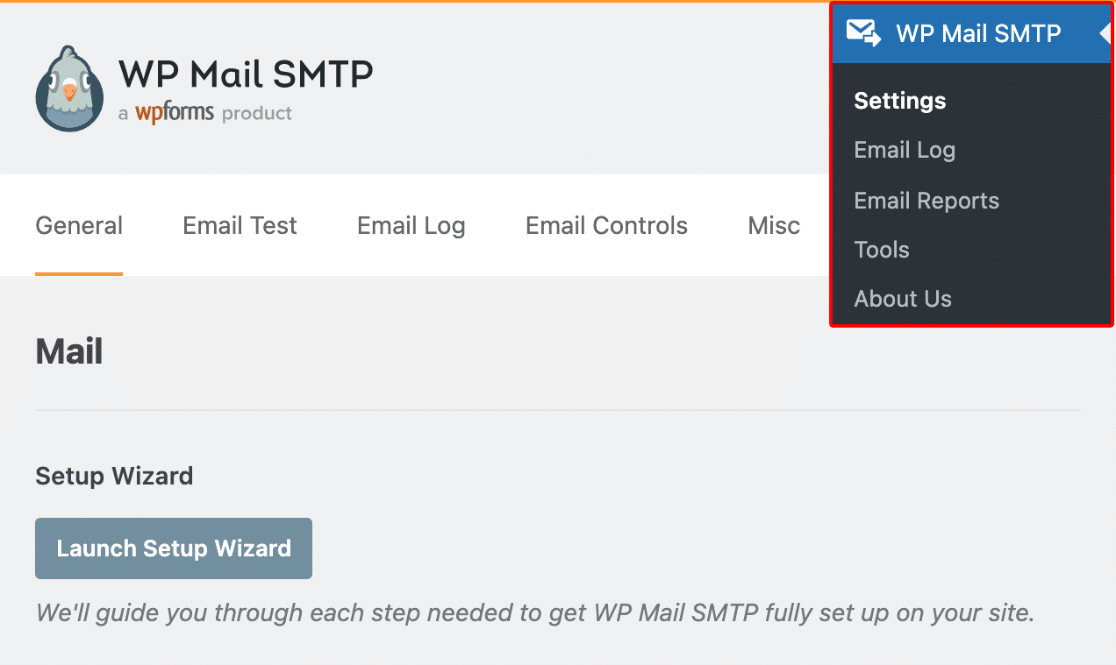
The wizard will prompt you to choose a mailer. As we’re working with SendLayer, that’s the one you should choose. We’ve chosen SendLayer as its API connection is a reliable alternative to the Other SMTP mailer.
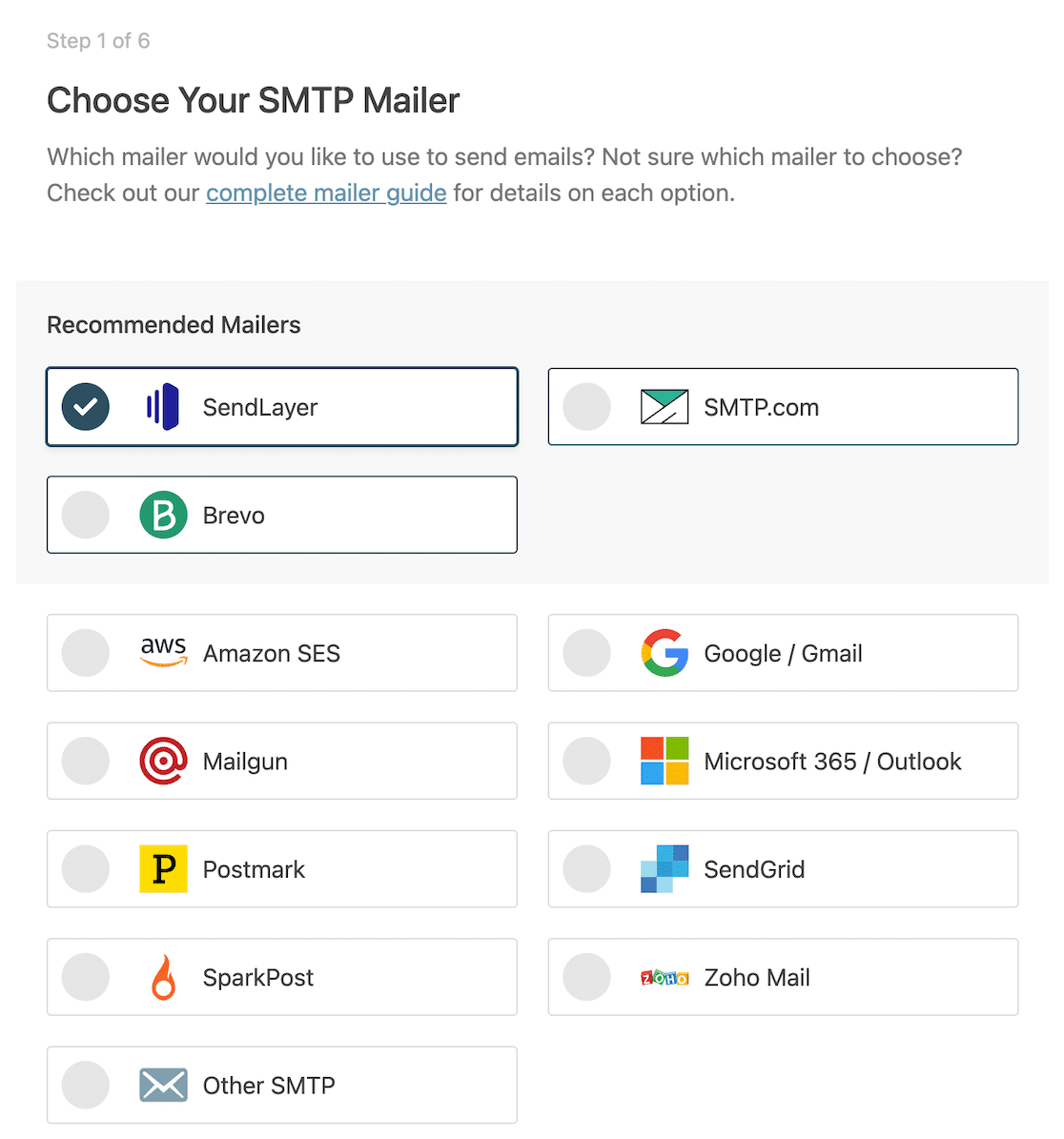
Click Save and Continue to move on to the mailer configuration settings. This is where you’ll enter your SendLayer API Key. This is the most important step to take but there are a few more settings to tinker with.
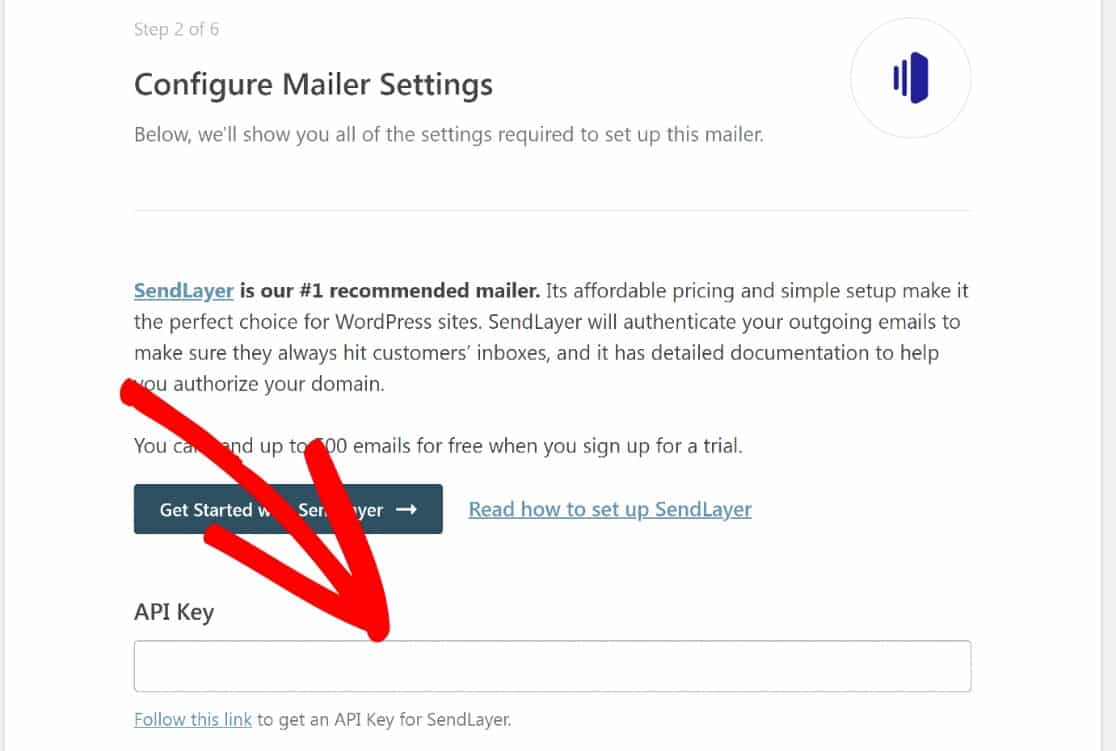
In the next step of the Setup Wizard, you can enter a From Email and From Name. All your outgoing emails will be sent from your From Email. Make sure the email address you enter here matches the domain name that you authenticated with SendLayer earlier.
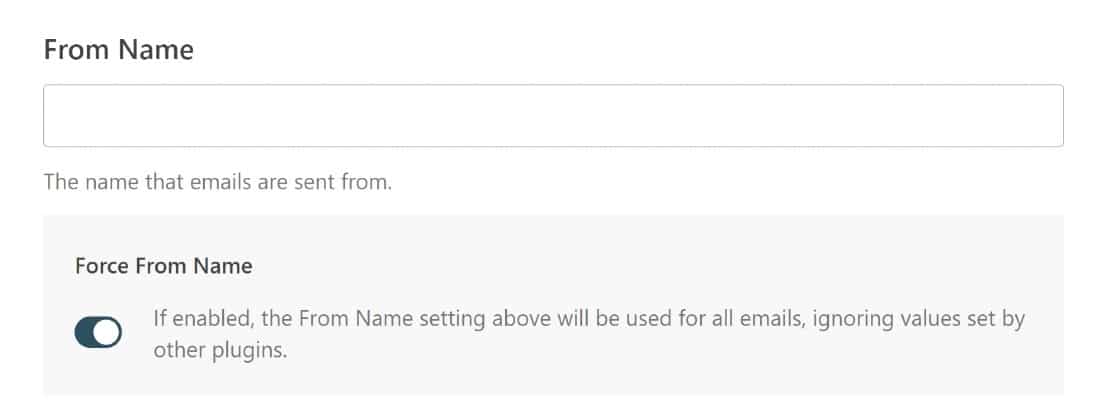
Similarly, the From Name is your sender name that will appear in your emails.
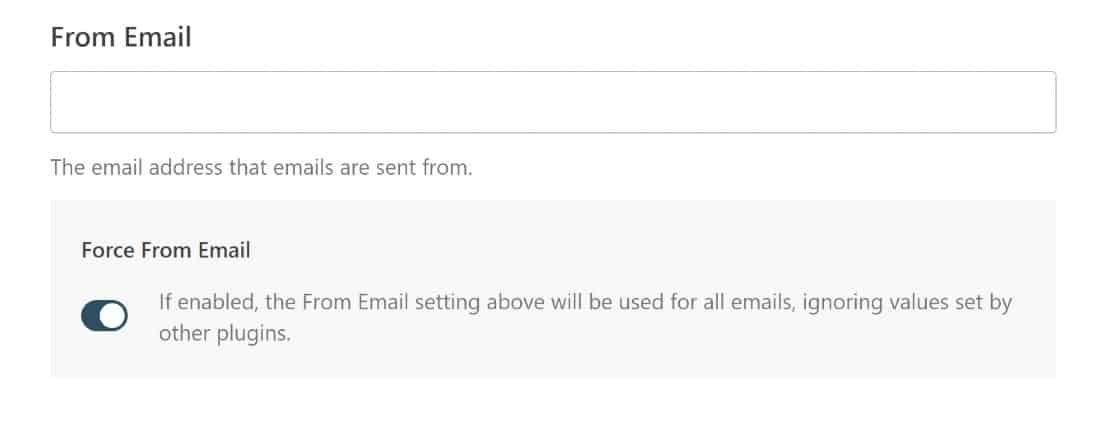
When you enable the Force From Email and Force From Name options, all emails sent from your website will use these email settings and override the email settings other plugins may be using on your site.
Once you’ve enabled these details, click Save and Continue to move on to the next few settings.

Next, there are a few optional email features that we’d encourage you to enable. These are:
- Improved Email Deliverability
- Email Error Tracking
- Detailed Email Logs
- Weekly Email Summary
It would be smart to enable these features for the best level of email tracking and deliverability management. Again, click the Save and Continue button to move on to the next page of the setup wizard.
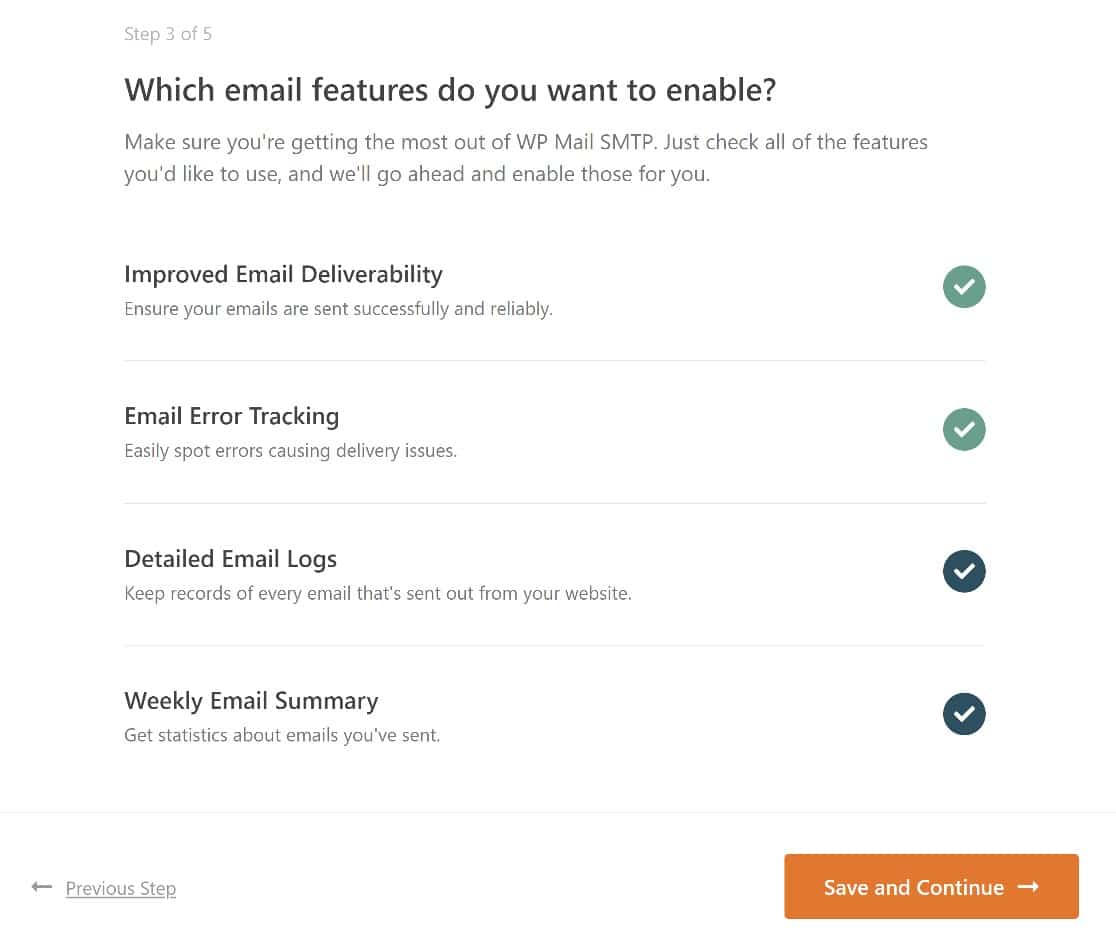
And that’s it for the SMTP setup.
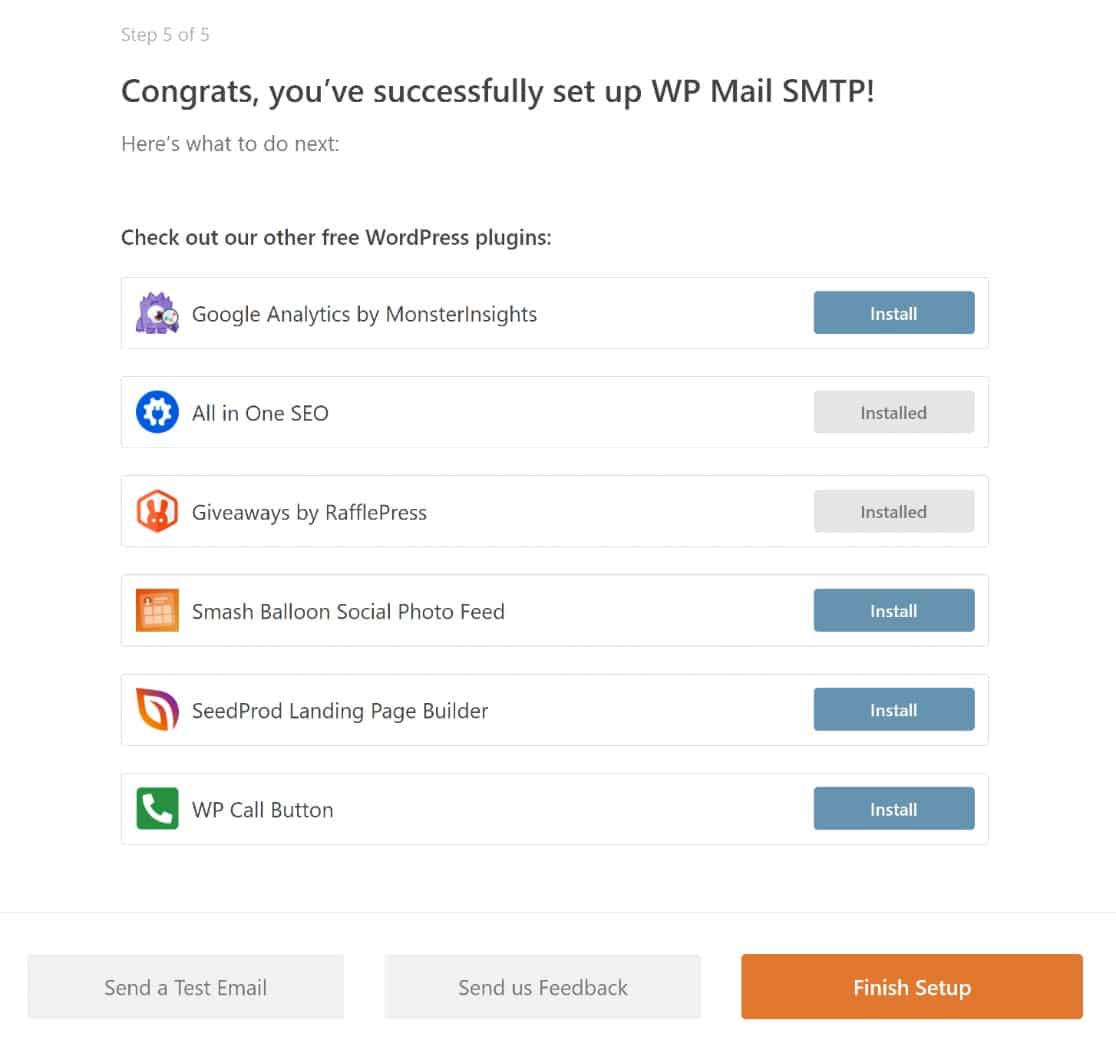
Now that WP Mail SMTP and SendLayer are all set up, SMTP blocks shouldn’t be an issue any longer. There’s only one thing left to do, and that’s to check that everything has worked as it should.
For that, we’re going to use WP Mail SMTP’s email testing feature.
Step 4. Send a Test Email
When you reach the final step of the setup wizard and get the success message, click on the Send a Test Email button on the bottom left.
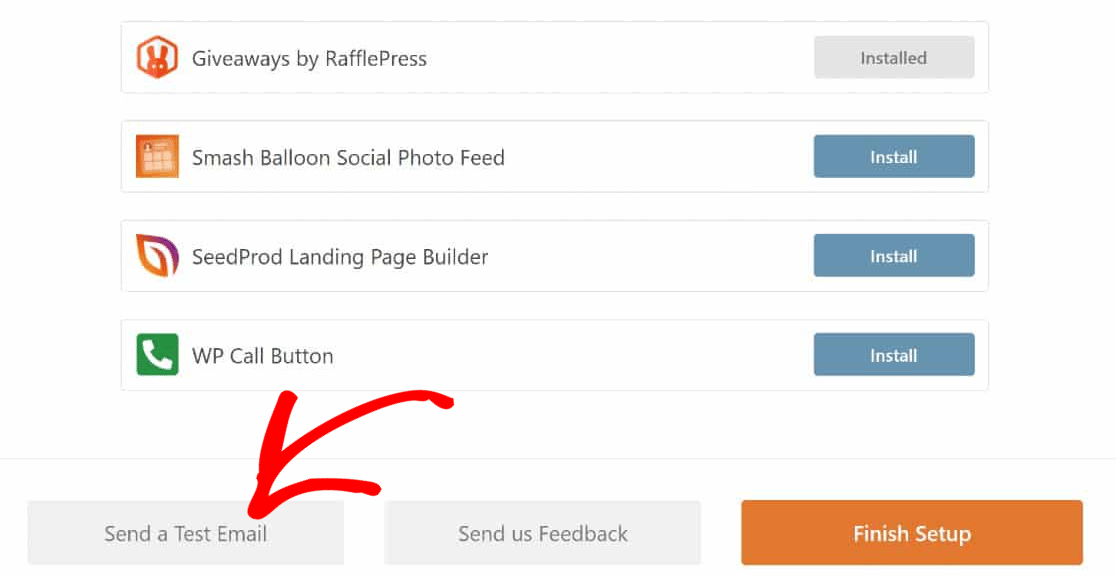
This will take you to WP Mail SMTP’s email testing tool.
In the Send To field, enter any email address that you have access to and click Send Email.
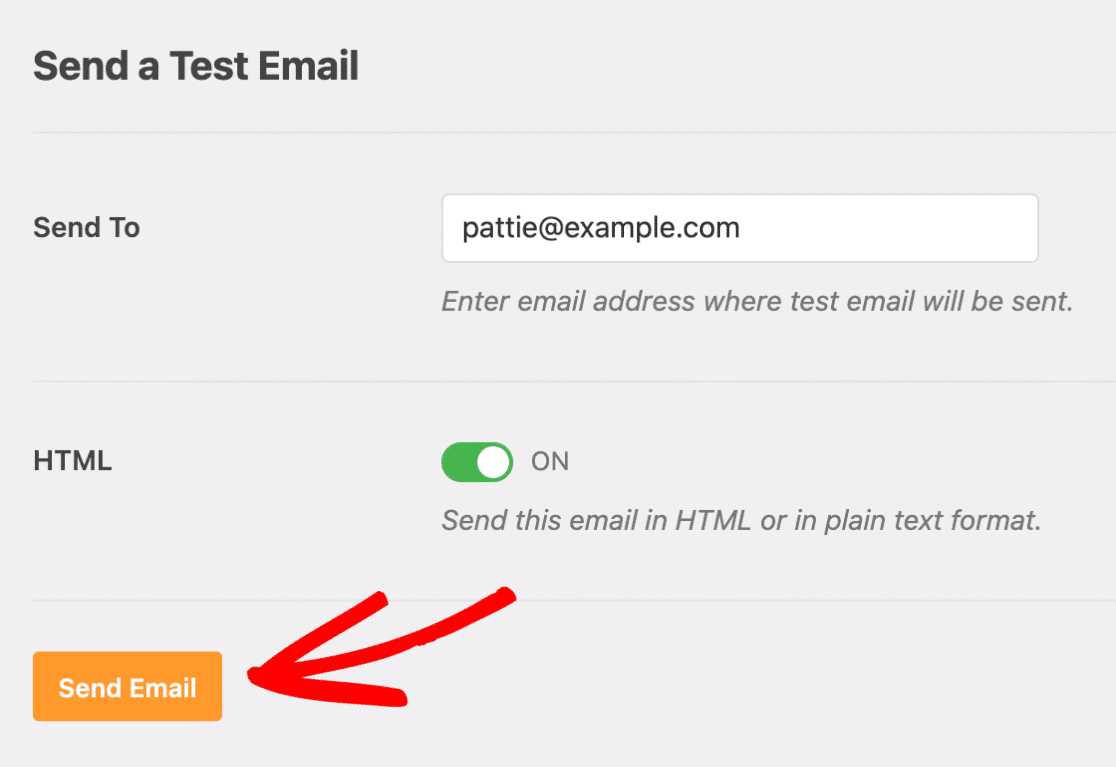
If the message has been sent successfully, you’ll get a success message.
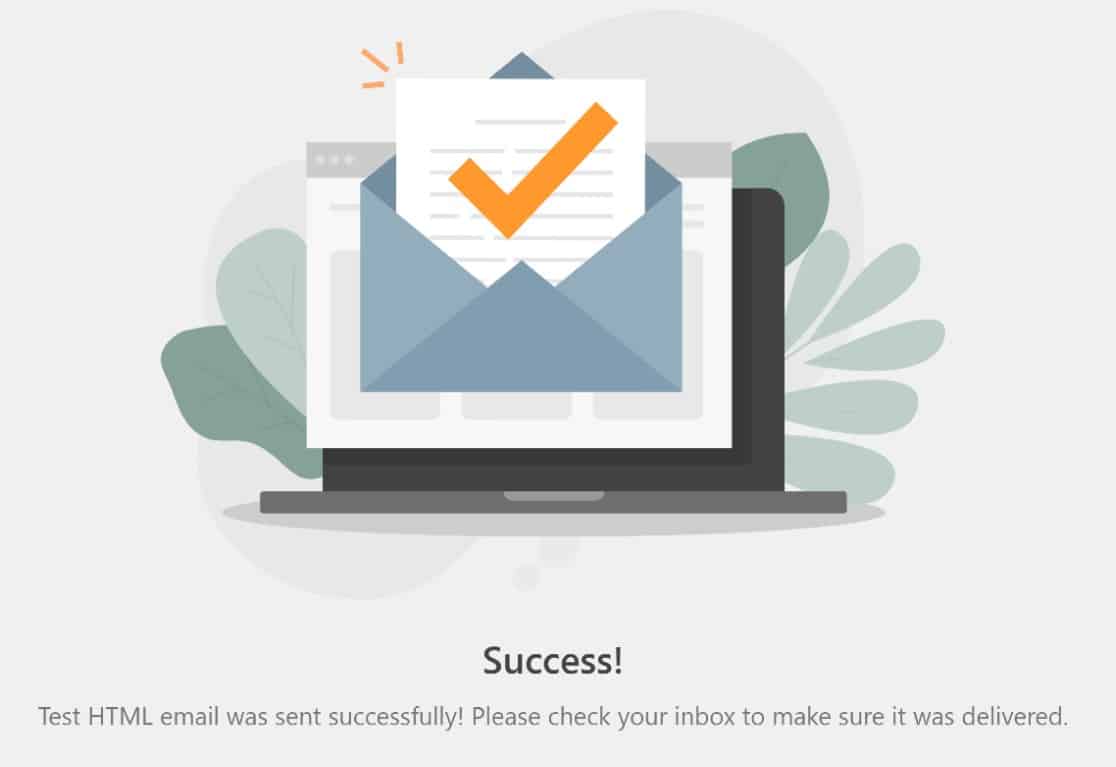
If everything went correctly, you should receive the email in your inbox. It will look like this:
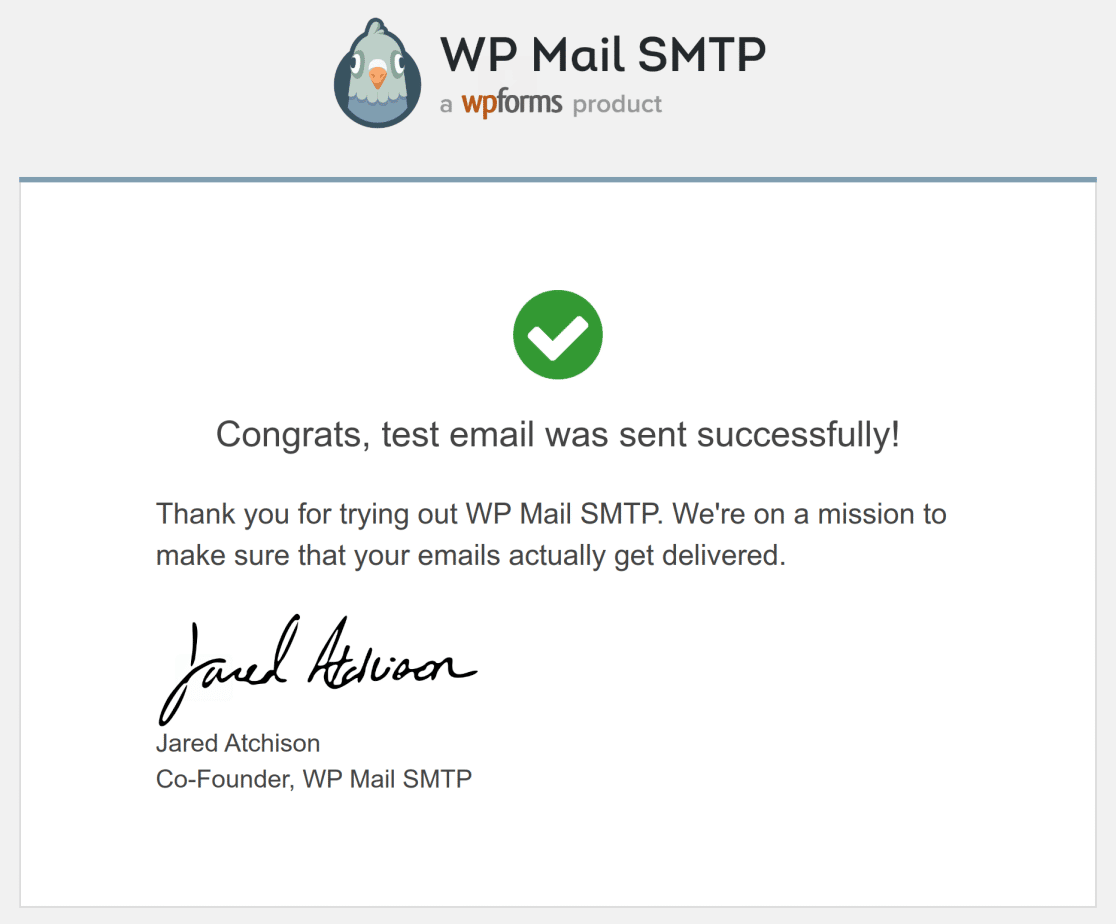
And that’s it! Now, having SMTP blocked by your hosting service won’t stop you from sending emails when you need to.
Next, Get Alerts When Your Emails Stop Working
Lots of things can go wrong to make your emails stop working suddenly. Given how important emails are for any modern business, it would be smart to set up alerts so that any email failures are brought to your attention immediately. Here’s how to get alerts when your WordPress emails stop working.
Another article you might find helpful is our guide on what to do when Elementor contact forms don’t send emails.
Ready to fix your emails? Get started today with the best WordPress SMTP plugin. If you don’t have the time to fix your emails, you can get full White Glove Setup assistance as an extra purchase, and there’s a 14-day money-back guarantee for all paid plans.If this article helped you out, please follow us on Facebook and Twitter for more WordPress tips and tutorials.

